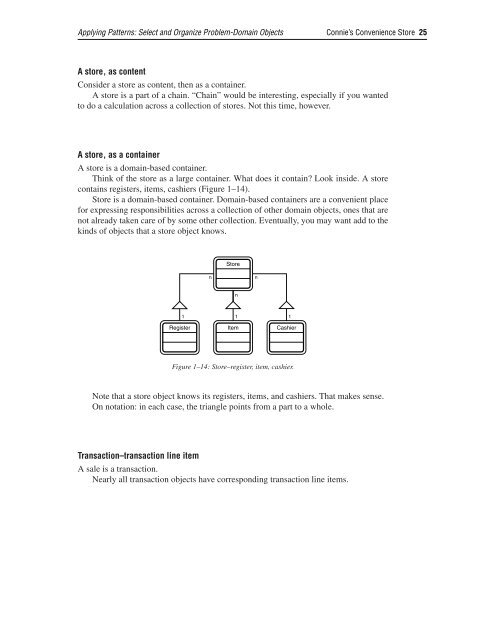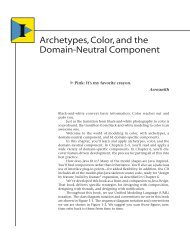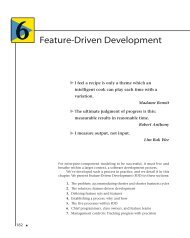Connie's Convenience Store - About Peter Coad
Connie's Convenience Store - About Peter Coad
Connie's Convenience Store - About Peter Coad
You also want an ePaper? Increase the reach of your titles
YUMPU automatically turns print PDFs into web optimized ePapers that Google loves.
Applying Patterns: Select and Organize Problem-Domain Objects Connie’s <strong>Convenience</strong> <strong>Store</strong> 25<br />
A store, as content<br />
Consider a store as content, then as a container.<br />
A store is a part of a chain. “Chain” would be interesting, especially if you wanted<br />
to do a calculation across a collection of stores. Not this time, however.<br />
A store, as a container<br />
A store is a domain-based container.<br />
Think of the store as a large container. What does it contain? Look inside. A store<br />
contains registers, items, cashiers (Figure 1–14).<br />
<strong>Store</strong> is a domain-based container. Domain-based containers are a convenient place<br />
for expressing responsibilities across a collection of other domain objects, ones that are<br />
not already taken care of by some other collection. Eventually, you may want add to the<br />
kinds of objects that a store object knows.<br />
Figure 1–14: <strong>Store</strong>–register, item, cashier.<br />
Note that a store object knows its registers, items, and cashiers. That makes sense.<br />
On notation: in each case, the triangle points from a part to a whole.<br />
Transaction–transaction line item<br />
A sale is a transaction.<br />
Nearly all transaction objects have corresponding transaction line items.<br />
<strong>Store</strong><br />
n n<br />
Register Item<br />
Cashier<br />
n<br />
1 1<br />
1




